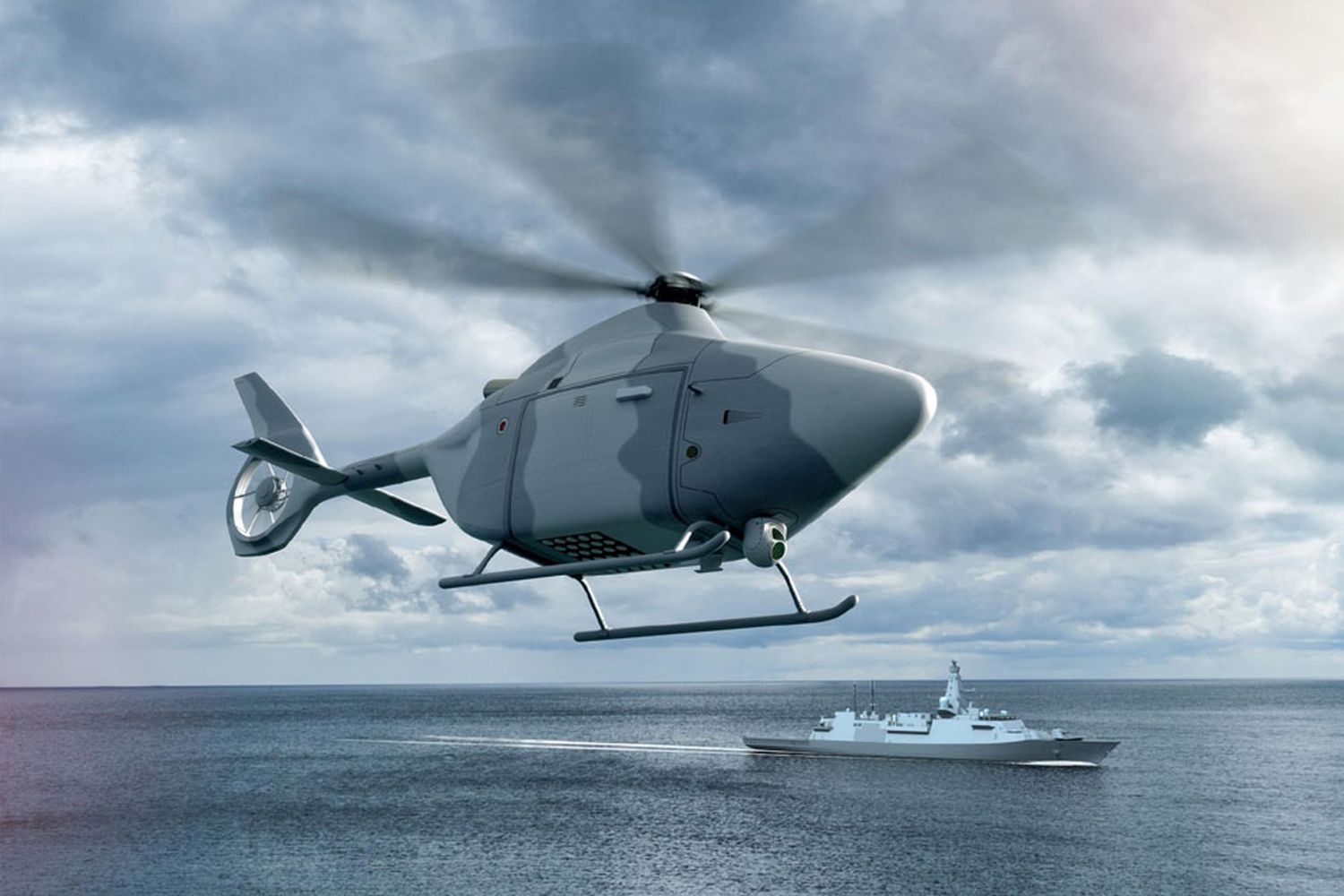Proteus: Leonardo's innovative modular UAS demonstrator for the Royal Navy
Leonardo and the Royal Navy present Proteus, an innovative unmanned helicopter with a modular and autonomous design.
Leonardo, the British Royal Navy, and the Future Capability Innovation (FCI) team of the UK Ministry of Defence have unveiled the design of the Proteus technological demonstrator aircraft.
This unmanned helicopter, weighing approximately three tons, will be used to demonstrate advancements in autonomy, modularity, and payload interchangeability while developing cutting-edge technologies for helicopters, including design and manufacturing techniques. The project is part of the Royal Navy's Maritime Aviation Transformation (MATx) strategy, which encompasses the evolution of maritime aviation through 2040.
A Highly Modular Maritime UAS
The design of the Proteus technological demonstrator, whose images were released today, reveals that components from Leonardo's entire helicopter portfolio were used to reduce costs and accelerate the aircraft's development. Leonardo has also leveraged the knowledge and experience from its current unmanned aerial systems (UAS) programs.
This design aims to demonstrate the feasibility of large UAS in the maritime environment, serving as a testbed for the development and demonstration of autonomous capability. This includes flight control laws and algorithms for large vertical take-off and landing (VTOL) autonomous aircraft.
Proteus's design is characterized by its modular payload bay. It is designed to enable mission flexibility, including the ability to swap fuel for payload. The ability to connect specific payloads for different missions aims to provide commanders on the ground with a wide range of options from a single type of aircraft. This is operationally useful and offers good value by avoiding the need to purchase and maintain multiple aircraft fleets.
Innovation in Development and Manufacturing
This development is being carried out at Leonardo's Yeovil site, the home of British Helicopters, which maintains an aggressive autonomy development roadmap covering the capabilities needed for autonomous flights and mission capability.
Leonardo has created a "digital twin" of the Proteus technological demonstrator to facilitate development. Using a digital twin, artificial intelligence (AI) algorithms, and machine learning (ML) in a synthetic environment allows Leonardo to test, modify, and demonstrate capability without needing real aircraft testing, thus reducing costs and significantly accelerating development compared to traditional helicopter programs.
Leonardo is also experimenting with applying new digital manufacturing technologies in helicopter production, including additive layer manufacturing (3D printing) and the use of cost-effective low-temperature-cured composites, which require fewer manufacturing stages in the production of parts.
Once tested, these technologies will be more widely employed to offer agility through spiral development techniques, reduce lifecycle costs compared to conventional manned aircraft, and improve resilience and sustainability in Leonardo's supply chain.
In addition to innovating in technologies, Leonardo is also using the Proteus program to transform its approach to collaboration with customers and end users. The company employs an "agile" methodology that breaks the project into phases and emphasizes continuous collaboration and improvement. This closer collaboration between Leonardo, DE&S, and the Royal Navy has allowed the €71 million (£60 million) project, initially contracted in 2022, to progress rapidly, with the demonstrator expected to fly for the first time in mid-2025.


Para comentar, debés estar registradoPor favor, iniciá sesión